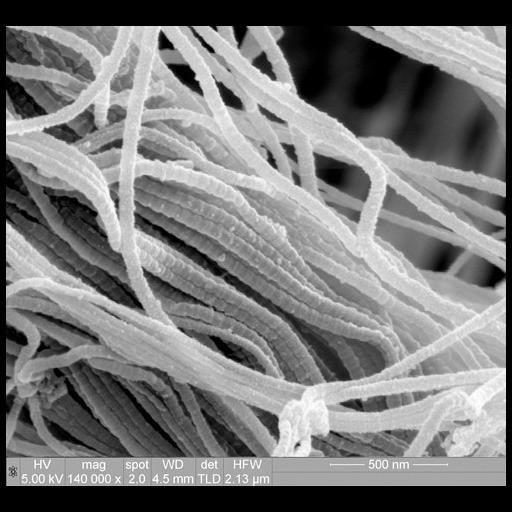Saying that we have a kink in our neck might be more literal than we thought. The attached image is showing collagen fibers of the joint capsule tissue around the knee. The collagen fibers in the superficial fascia of the neck is constructed in the same manner. The fascia fibers in the image show a characteristic “D-banding” because of the triple-helix construction creating the structure on the inside of what appears to be a tube. The thin space in between these D-bands are areas that are vulnerable to buckling.
According to the late Leon Chaitow, when a fascia fiber is not under constant tension, the fiber is vulnerable to buckling or kinking. However, buckling can be avoided as long as the appropriate tension is maintained. This is one of the reasons why we need to stay flexible through exercise and stretching. When we stop moving and the expected tension is no longer there, that’s when “strain-driven defects” occur which prevents our fascia from self-repairing.
Two main points can be learns from this information. (1) You do not need to injury yourself to mess up your fascia. Lack of movement and associated tension is enough to cause internal scars as the fascia fibers buckle. (2) External tension from “compression/shear force/stretching might be capable of influencing this apparently constant process.” (Chaitow).
In reference to the second main point, the method that Bobbi Jo has created and the methods we train in our Academy use a great deal of pressure to reach the necessary compression and shear force on the fascia fibers to aid in buckling prevention and provide the necessary external applied load required for the fascia fibers to repair. There is a science behind our actions. A weighted tuning fork is one of the few tools that can perform this repair process when the self-repair and maintenance of fascia breaks down.
Citation: Leon Chaitow, New evidence of a dynamic fascial maintenance and self-repair process, Journal of Bodywork and Movement Therapies, Volume 20, Issue 4, 2016,
Pages 701-703, ISSN 1360-8592,
Image citation: Paul Gunning (2012) CIL:40651. CIL. Dataset. https://doi.org/doi:10.7295/W9CIL40651


